 |
King of Chemicals Manufacturers |
Specifications, Properties, Uses, SDS of Diethyl Phthalate USP NF BP Ph Eur EP IP Grade Manufacturer Supplier Exporter Wholesale & Small Packs, CAS Number 84-66-2. |
|
| King of Chemicals has several associated companies having accreditations like cGMP, GLP - FDA Approved Good Manufacturing Practice and Good Laboratory Practice of WHO standard, ISO-9001, ISO-14001, ISO/IEC 17025, ISO ISO-45000, HACCP, FSSC 220000, FSSAI, "REACH" Registered, Kosher & Halal Certified. e-CTD and DMF support can be made available if needed. We offer USP NF BP Ph Eur EP IP JP Analytical Reagent FCC Food Grade Chemicals & Nutraceuticals. | |
        |
|
Muby Chem Pvt. Ltd. is a several decades old group of companies, engaged in manufacturing, supplying, distributing, wholesale supplies of Diethyl Phthalate for actual users, including retail or small pack supplies for research and development work.
We supply fine and speciality chemicals, pharmaceutical excipients, mineral fortifiers in chemically pure, analytical reagent grade, IP BP USP Ph Eur EP JP and other pharmaceutical grade monograph including FCC Food grade chemicals and Nutraceuticals at best prices. We and/or our associated units have all the facilities to supply as per cGMP standard observing good manufacturing practice and good laboratory practice. We can assure low microbial count and also offer a test certificate for the same. We maintain warehouses across USA, India, and UAE. Our group exports to USA, Canada, Mexico, Argentina, Brazil, Chile, Korea, Malaysia, Thailand, Indonesia, Europe, and several other parts of the world. We supply in wholesale container loads to small pack of few grams. Solid products may be specified for it size and shape as desired by the buyer.
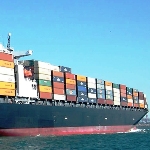
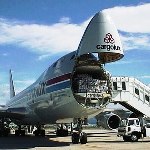
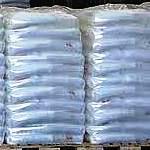
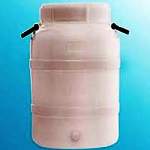
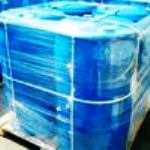
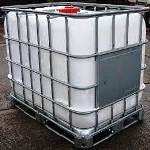
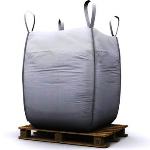
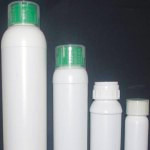
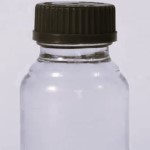
Diethyl Phthalate CAS Number 84-66-2
For Properties Specifications Uses of Diethyl Phthalate Click Properties, Specifications, Uses, Price, Process of Diethyl Phthalate Manufacturer.
For For SDS MSDS Sheet of Diethyl Phthalate Click SDS Safety Data Sheet MSDS Sheet of Diethyl Phthalate Manufacturer.
The Properties, Specifications, Monograph and Uses of Diethyl Phthalate:
Diethyl phthalate or DEP or Diethyl phthalic acid or 1, 2-Benzenedicarboxylic acid diethyl ester or Diethyl benzene-1,2-dicarboxylate is a phthalate ester, namely the diethyl ester of phthalic acid. It is a clear substance that is liquid at room temperature. Diethyl phthalate DEP is commonly used as a solvent in cosmetics and as a plasticizer. It is often used to bind cosmetics and fragrances. Other industrial uses include plasticizers, detergent bases and aerosol sprays.
Specifications of Diethyl Phthalate USP NF Grade:
C12H14O4 --- 222.24
1,2-Benzenedicarboxylic acid, diethyl ester;
Diethyl phthalate --- CAS 84-66-2
DEFINITION
Diethyl Phthalate contains NLT 98.0% and NMT 102.0% of diethyl phthalate (C12H14O4), calculated on the anhydrous basis. [Caution— Avoid contact. ]
IDENTIFICATION
A. Infrared Absorption: On undried specimen
Residue on Ignition:
Sample: 10 g
Analysis: Gently heat the Sample until the liquid has evaporated, and ignite the residue to constant weight.
Acceptance criteria: NMT 0.02%
Specific Gravity: 1.118–1.122 at 20C
Refractive Index: 1.500–1.505 at 20C
Acidity:
Sample: 20.0 g
Analysis: Mix the Sample with 50 mL of alcohol that previously has been neutralized to a phenolphthalein endpoint, and titrate with 0.1 N sodium hydroxide to a phenolphthalein endpoint.
Acceptance criteria: NMT 0.50 mL is required for neutralization.
Water Determination, Method I: NMT 0.2%
Specifications of Diethyl Phthalate BP Ph Eur Grade:
C12H14O4 --- 222.2 --- 84-66-2
Action and use: Excipient.
DEFINITION
Diethyl benzene-1,2-dicarboxylate.
Content: 99.0 per cent m/m to 101.0 per cent m/m.
CHARACTERS
Appearance: Clear, colourless or very slightly yellow, oily liquid.
Solubility: Practically insoluble in water, miscible with ethanol (96 per cent).
IDENTIFICATION
First identification: B, C
Second identification: A, D, E
A. Relative density: 1.117 to 1.121.
B. Refractive index: 1.500 to 1.505.
C. Infrared absorption spectrophotometry.
Preparation Thin films.
Comparison diethyl phthalate CRS.
D. Thin-layer chromatography. To pass the test.
Results The principal spot in the chromatogram obtained with the test solution is similar in position and size to the principal spot in the chromatogram obtained with the reference solution.
E. To about 0.1 mL add 0.25 mL of sulfuric acid and 50 mg of resorcinol. Heat on a water-bath for 5 min. Allow to cool. Add 10 mL of water and 1 mL of strong sodium hydroxide solution. The solution becomes yellow or brownish-yellow and shows green fluorescence.
TESTS
Appearance: The substance to be examined is clear and not more intensely coloured than reference solution.
Acidity: Dissolve 20.0 g in 50 mL of ethanol (96 per cent) previously neutralised to phenolphthalein solution. Add 0.2 mL of phenolphthalein solution. Not more than 0.1 mL of 0.1 M sodium hydroxide is required to change the colour of the indicator to pink.
Related substances: To pass the test by Gas chromatography.
Water: Maximum 0.2 per cent, determined on 10.0 g.
Sulfated ash: Maximum 0.1 per cent, determined on 1.0 g.
We also manufacture and supply Diethyl Phthalate IP EP Grade.
The MSDS-SDS Hazard Statement of Diethyl Phthalate:
Diethyl phthalate or DEP SDS GHS, Safety Data Sheet
MSDS Sheet, Material Safety Data Sheet 11-Feb-25
Section 1: Chemical Product and Company Identification
Product Name & Other Names: Diethyl phthalate or DEP.
CAS Number: 84-66-2
EINECS EC Code: 201-550-6
Relevant uses and uses advised against (if any): Industrial Manufacturing.
Suppliers: As per letterhead.
Section 2: Hazards Identification
GHS, Globally Harmonized System Classification in accordance with 29 CFR 1910
Hazard Class and Category Code(s), Regulation (EC) No 1272/2008 (CLP)
Not a hazardous substance or mixture according to Regulation (EC) No. 1272/2008.
This substance is not classified as dangerous according to Directive 67/548/EEC.
Labeling Regulation as per GHS & EC 1272/2008 (CLP) & GHS
GHS Label Elements NONE |
Signal Word: None
Precautionary statements:
P261: Avoid breathing dust/fume/gas/mist/vapors/spray.
P262: Do not get in eyes, on skin, or on clothing.
P281: Use personal protective equipment as required.
P302+P352: IF ON SKIN: Wash with plenty of soap and water.
P304+P340: IF INHALED: Remove victim to fresh air and keep at rest in a position comfortable for breathing.
P305+P351+P338: IF IN EYES: Rinse cautiously with water for several minutes. Remove contact lenses, if present and easy to do. Continue rinsing.
P337+313: If eye irritation persists get medical advice/attention.
Section 3: Composition and Information on Ingredients
Product Name & Other Names: Diethyl phthalate or DEP.
CAS Number: 84-66-2
EINECS EC Code: 201-550-6
Section 4: First Aid Measures
Always seek medical advice after the first aid treatment.
Skin: Rinse with water. Soap may be used. Seek Medical Aid.
Eyes: Wash eyes with plenty of water for at least 15 minutes, lifting lids occasionally. Seek Medical Aid.
Inhalation: Remove to fresh air. If not breathing, give artificial respiration. If breathing is difficult, give oxygen.
Ingestion: If swallowed, induce vomiting immediately after giving two glasses of water. Never give anything by mouth to an unconscious person.
Section 5: Fire and Explosion Data
Products of Combustion: Oxides of Carbon. The product can ignite at high temperature.
Fire Fighting Media and Instructions: Use water spray, alcohol-resistant foam, dry chemical or carbon dioxide. Wear self-contained breathing apparatus for firefighting if necessary.
Special Information: In the event of a fire, wear full protective clothing and NIOSH-approved self-contained breathing apparatus with full face piece operated in the pressure demand or other positive pressure mode.
Section 6: Accidental Release Measures
Personal precautions, protective equipment and emergency procedures: Avoid breathing dust/fumes/gas/mist/vapors/spray. Ensure adequate ventilation. Use individual protective equipment (waterproof boots, suitable protective clothing, safety glasses, etc.).
Environmental precautions: Do not let the product enter drains, soil or water sources.
Methods and materials used for containment Cleanup procedures and Storage:
Small Spill: Use appropriate tools to put the spilled solid in a convenient waste disposal container.
Large Spill: Contain spilled material. Do not inhale vapors, mist, or gas. Avoid dust/mist formation. Cover with inert absorbent material and use a shovel to put the material into a convenient waste disposal container.
Section 7: Handling and Storage
Precautions for safe handling: Apply according to good manufacturing and industrial hygiene practices. Ensure proper ventilation. Wash thoroughly after handling. Do not drink, eat or smoke while handling. Avoid contact with skin, eyes and clothing. Minimize dust generation. Avoid breathing dust/fumes/gas/mist/vapors/spray. Keep container tightly closed. Avoid ingestion and inhalation. Use individual protective equipment (waterproof boots, suitable protective clothing, safety glasses, etc.).
Conditions for safe storage, including any incompatibilities: Store in cool, dry and ventilated area away from heat sources and protected from sunlight in tightly closed original container. Keep air contact to a minimum. Do not leave the material container open. Store protected from heat, sparks and ignition sources and incompatible materials. Avoid contact with skin and eyes. Avoid inhalation of dust/mist/vapor. Do not store with incompatible materials like oxidizing agents.
Section 8: Exposure Controls/Personal Protection
Exposure Guidelines:
ACGIH TLV: TWA: 5 mg/m3
OSHA PEL: (Vacated) TWA: 5 mg/m3.
Engineering Controls: Use process enclosures, local exhaust ventilation, or other engineering controls to keep airborne levels below recommended exposure limits.
Ventilation System: A system of local and/or general exhaust is recommended to keep employee exposures as low as possible.
Personal Respirators (NIOSH Approved): For conditions of use where exposure to dust or mist is apparent and engineering controls are not feasible, a particulate respirator may be worn.
Skin Protection: Wear protective gloves and clean body-covering clothing.
Eye Protection: Use chemical safety goggles and/or full face shield where dusting or splashing of solutions is possible. Maintain eye wash fountain and quick-drench facilities in work area.
Other Control Measures: Maintain good housekeeping in work area. Handle in accordance with good industrial hygiene and safety practice.
Section 9: Physical and Chemical Properties
Physical state and appearance: Clear, colorless or very slightly yellow, oily liquid.
Odor: Without significant odor.
Odor threshold: No information found.
pH: No information found.
Relative density: 1.12
Melting point/freezing point: -4C literature.
Initial boiling point and boiling range: 295C literature.
Flash point: 161C literature.
Auto-ignition temperature: No information found.
Decomposition temperature: No information found.
Upper/lower flammability or explosive limits: No information found.
Vapor pressure: No information found.
Vapor density: No information found.
Evaporation rate: No information found.
Flammability (solid, gas): No information found.
Partition coefficient: n-octanol/water: No information found.
Solubility: Practically insoluble in water, miscible with ethanol (96 per cent).
Viscosity: No information found.
Section 10: Stability and Reactivity Data
Stability: It is stable in room temperature in closed containers under normal storage & handling.
Conditions of instability: Incompatible materials, Strong oxidizers.
Incompatibility with various substances: Avoid high temperatures, sparks, open flames and moisture. Avoid contact with strong oxidizing agents.
Polymerization: Will not occur.
Section 11: Toxicological Information
LD50 Oral - Rat: 8600 mg/kg.
LD50 Dermal – Rat: > 11200 mg/kg
Carcinogenic Effects: Not a reported carcinogen by IARC, NTP, ACGIH, OSHA.
Reproductive toxicity: No information found.
Teratogenicity: No information found.
Developmental Effects: No information found.
Section 12: Ecological Information
Toxicity to fish: flow-through test LC50 - Cyprinodon variegatus (sheepshead minnow) - 29 mg/l - 96 h.
Toxicity to daphnia and other aquatic invertebrates: static test LC50 - Daphnia magna (Water flea) - 90 mg/l - 48 h.
Persistence and Degradability: Readily biodegradable.
Bioaccumulation/ Accumulation: No information found.
Mobility: No information found.
Section 13: Disposal Considerations
Waste Disposal: Waste must be disposed of in accordance with federal, state and local environmental control regulations.
Section 14: Transport Information
DOT USA & ADR/RID Europe: Not regulated.
IMDG: Not regulated.
IATA: Not regulated.
Section 15: Other Regulatory Information
USA Regulations:
SARA 311/312 Hazard Categories: See section 2.
California Prop 65: Not listed.
Disclaimer:
**************************
Our company provides this MSDS sheet in good faith but makes no representation as to its comprehensiveness or accuracy. This SDS sheet is intended only as a guide to the appropriate precautionary handling of the material by a properly trained person using this product. The above information has been compiled from various sources and has the possibility of discrepancy and being out-dated information. Individuals receiving the information must exercise their independent judgment and do further search in determining its appropriateness for a particular purpose. In no case shall our company be liable to loss or damages by the product user.
**************************

Diethyl Phthalate Manufacturers, Suppliers, Exporters, Wholesalers:
King of Chemicals manufacturers

Plot No. 2900/46&47 + 2900/163to167, GIDC, Ankleshwar, Dist. Bharuch, India
India, USA, UAE
TEL: (Office) 91-22-23774610, 91-22-23723564
e-mail: info@kingofchemicals.com
Copyright and Usual Disclaimer is Applicable --- March 26, 2025
If I give you “My Word” Nobody can undo it.
If I sign an “Agreement” my Lawyer will undo it
Our products are for industrial and laboratory use only. The user must test the material before use. We are not dispensing chemists or druggist and do not offer over the counter type (OTC) products for medical use by individuals.
We and our associates manufacture pure chemicals surpassing Monograph Specifications of Analytical Reagent Standards, British & European Pharmacopoeia BP Ph Eur EP Standard, US Pharmacopoeia USP NF Standard, Indian Pharmacopoeia IP Standard, Japan Pharmacopoeia JP Standard, FCC Food Grade Standard. |
|